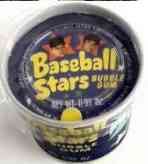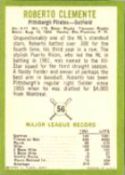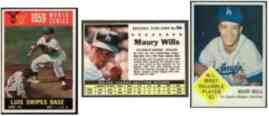Below are short bits & pieces on sportscard & baseball trading card collecting.
Please wander around the website for more info, prices, values & images
on vintage baseball, football, basketball, hockey, sport and non-sports cards.

Vintage Topps 1956 Baseball Cards
Checklist & Prices


1956 Topps were slightly larger (3-3/4" by 2 5/8") horizontal cards
similar to 1955 Topps cards, some even sharing portraits with 1954 and 1955
Topps cards. Team cards & checklists appeared for the first time in 1956.
With Bowman gone, after missing the last 3 years, Mickey Mantle was back !!!
A fun & simple set, 1956 Topps had no high numbers or expensive rookies
but for serious 1956 collectors, there are over 200 variations.
Most variations deal with card stock (gray or white back).
For #101-180 gray appears to outnumber white about 9-to-1.
Many team cards had 2 or 3 variations with team names
Left, Center or Right.


There are 2 great cards: #31 Hank Aaron which actually pictures Willie Mays
sliding home and #135 Mickey Mantle.
Mantle shown leaping high into the stands robbing a home run !
Artist did a great job showing Mantle making the catch !
BUT ... Mantle looked great leaping but the ball flew over his glove.

The 1956 Topps Pins used same portrait photos as the cards.
Click for complete
1956 Topps Pins Checklist and Prices
Click for more info and complete
1956 Topps Baseball card checklist, values and prices.
|

1970/1972/1973 Topps Candy Lids
Checklist & Values


Topps has tried many crazy products, called "test issues".
Mostly distributed in limited areas, test issues were scarce.
"Candy Lids" were little tubs of candy with player's photos on
bottom of a 1-7/8" lid. 10 cents/tub, 24 tubs/box.
Topps first Candy Lids in 1970 and they are very, very hard to
find. They had small photos of Tom Seaver, Carl Yastrzemski & Frank Howard.


 1970 Topps Candy Lids were called "Baseball Stars Bubble Gum",
had 24 players, the 1973 Topps Candy Lids had 55.
1970 Topps Candy Lids were called "Baseball Stars Bubble Gum",
had 24 players, the 1973 Topps Candy Lids had 55.
Topps planned 1972 Candy Lids but never released it, a few proofs do exist.
 Topps 1973 Pinups & Comics share many of the same photos.
Topps 1973 Pinups & Comics share many of the same photos.
Click for complete
1973 Topps Candy Lids Checklist/Prices
Note: You may be on that page now.
|



1963 Fleer Baseball Cards
Checklist & Values
1960 & 1961 Fleer baseball card sets of old-timers
like Babe Ruth bombed. Kids wanted Willie Mays & Mickey Mantle.
Topps had rights to baseball cards & gum so Fleer
tried something new ... COOKIES !!!
Cherry flavored cookies with 1963 baseball cards.

1963 Fleer baseball card set was cut short at 66 cards & checklist
by Topps lawsuit. But what 66 cards! Attractive & packed:
Clemente,Koufax... & 2 very scare Short Prints.

Maury Wills 'rookie' card is a story.
Majors in 1959, quickly superstar. But 1963 for rookie ???
In 1959 Topps deemed Wills NOT WORTHY.

 Wills was upset. After 1962 MVP, Topps came knocking but he said "NO!".
Finally, 1967, Wills first Topps & most costly card.
Note: 1961 Post Cereal card, years BEFORE
Wills was upset. After 1962 MVP, Topps came knocking but he said "NO!".
Finally, 1967, Wills first Topps & most costly card.
Note: 1961 Post Cereal card, years BEFORE
 'official' rookie. He also photo-bombed a 1960 Topps card.
'official' rookie. He also photo-bombed a 1960 Topps card.
Disclaimer: Above mostly true - but Wills has said "no feud".
Note: You may be on that page right now.
|

Baseball card collecting terms (part A)
Airbrushing is the art of touching up a photo prior to the card being printed.
It was generally done to remove imperfections or update or hide a players
jersey/cap logo. Because of advancements in print technology and computers this is
no longer needed.
All-Star card (AS) usually a subset card picturing a player who participated in the
previous seasonís all-star game. Topps created these in their 1958 High Number
issue and has continued the practice fairly regularly to date. Such cards
are usually designated in price guides with the abbreviation of AS.
Assorted A general mix of cards often containing many duplicates.
Auction items are sold to the highest bidder. Auctions used to be live
or thru the mail/phone but today most auctions are online.
Auction Catalog lists the rules and descriptions and often images
of the items in an auction.
Authentication verification that an item (card, autograph) is genuine. Most "game-used"
material inserts have a written declaration of authenticity on the reverse.
Authorized Issue card or memorabilia item that has been properly licensed. If
the item is of a player, his written permission must be given in order for it to be considered authorized.
© 1995-2019 "InterNet's Baseball Card Store" / Joseph Juhasz ... All Rights Reserved
|








